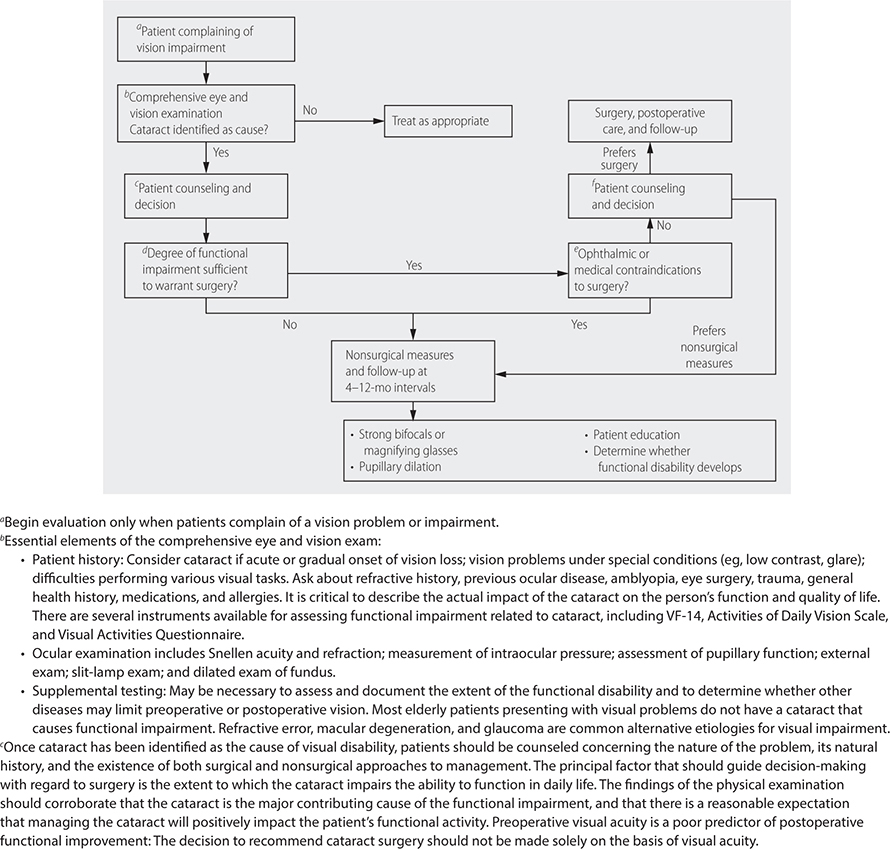Population: Adults with cataracts.
Organization
 AAO 2021
AAO 2021
Recommendations
–Refer patients with symptomatic cataracts for surgery. Dietary intake and nutritional supplements have minimal effect on the prevention or treatment of cataract.
–Obtain initial history of symptoms, ocular history, systemic history, assessment of visual functional status, and medications currently used (Fig. 22–1).
–Remove cataracts when visual function no longer meets the patient’s needs and cataract surgery provides a reasonable likelihood of quality-of-life improvement.
–Remove cataracts when there is evidence of lens-induced disease or when it is necessary to visualize the fundus in an eye that has the potential for sight.
–Avoid surgery under the following circumstances:
• Tolerable refractive correction provides vision that meets the patient’s needs and desires; surgery is not expected to improve visual function, and no other indication for lens removal exists.
• The patient cannot safely undergo surgery because of coexisting medical or ocular conditions.
• Appropriate postoperative care cannot be arranged.
• Patient or patient’s surrogate decision-maker is unable to give informed consent for nonemergent surgery.
Practice Pearls
• Cataracts will cause the red reflex to appear shadowed or absent on physical exam. Symptoms may include vision impairment, sensitivity to glare, and difficulty with night vision.
• Routine preoperative medical testing does not appear to measurably increase the safety of the surgery.
Sources
–American Academy of Ophthalmology Preferred Practice Pattern: Cataract/Anterior Segment Summary Benchmark. 2021. http://www.aao.org
–American Optometric Association Consensus Panel on Care of the Adult Patient with Cataract. Optometric Clinical Practice Guideline: Care of the Adult Patient with Cataract. 2004. http://www.aoa.org
–Am Fam Physician. 2016;94(3):219-226.
FIG. 22–1 CATARACT IN ADULTS: EVALUATION AND MANAGEMENT ALGORITHM.

